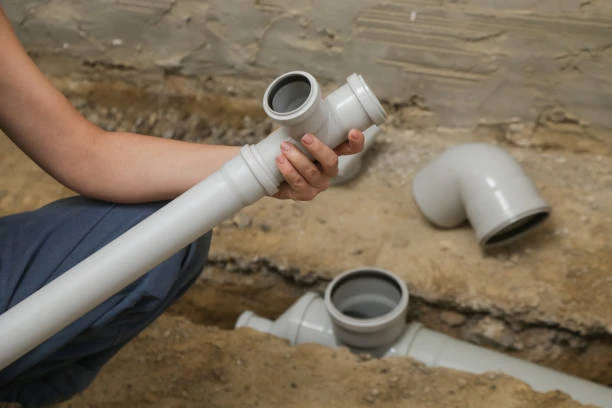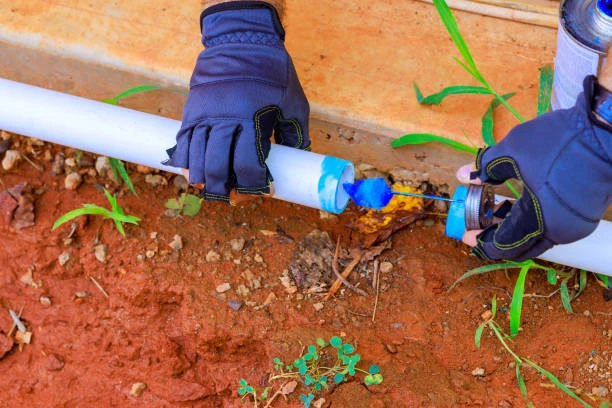Introduction to PPR Pipe Fittings
PPR pipe fitting have quickly become popular in the plumbing industry due to their lightweight and corrosion-resistant nature. With their advantages over traditional materials, PPR pipe fittings are widely used in both residential and industrial applications for transporting hot and cold water as well as other fluids.
What are PPR Pipe Fittings?
Definition and Importance
PPR pipe fittings are connectors and accessories made from Polypropylene Random Copolymer, specially designed to join and direct pipes in a plumbing system. They are essential for creating secure and long-lasting connections in both new and existing plumbing systems.
Composition of PPR Material
PPR is known for its durability and flexibility, providing advantages that traditional materials like metal and rigid plastics cannot offer. Its composition includes additives that enhance its ability to resist corrosion and chemical reactions, making it ideal for plumbing.
Advantages of PPR Pipe Fittings
Lightweight and Easy to Handle
One of the standout features of PPR pipe fitting is their lightweight design, which makes them easier to handle, transport, and install. This weight difference significantly reduces transportation costs and labor intensity, making them highly cost-effective.
High Corrosion Resistance
Corrosion can degrade pipes, causing leaks and contamination over time. PPR fittings resist corrosion, which is particularly important in systems transporting potable water, as it ensures that pipes do not deteriorate and maintains water purity.
Why Corrosion Resistance is Crucial in Plumbing
Corrosion is a natural process that can weaken pipes and fittings, leading to costly repairs and potential contamination of water supplies. Traditional metal pipes are highly susceptible to rust and corrosion over time, especially when exposed to high humidity or harsh chemicals. PPR’s resistance to corrosion makes it a suitable, long-lasting solution for water transport, ensuring both safety and efficiency.
Applications of PPR Pipe Fitting
Residential Use
In homes, PPR fittings are commonly used for plumbing hot and cold water systems, underfloor heating, and cooling systems. Their lightweight and corrosion-resistant properties make them an ideal choice for ensuring safe, durable connections in household plumbing.
Commercial and Industrial Use
Beyond residential applications, PPR pipe fittings are extensively used in commercial settings like hotels, hospitals, and factories. Their resistance to chemicals and corrosion makes them ideal for transporting not just water but also certain types of chemicals and gases.
Comparing PPR with Traditional Pipe Fitting
PPR vs. PVC
While PVC is often used in plumbing, it lacks the durability of PPR in handling high temperatures and pressure. PVC pipes are best for cold-water systems, while PPR is suitable for both hot and cold applications due to its higher tolerance to temperature and pressure.
PPR vs. Copper and Steel
Copper and steel have been used for decades in plumbing systems but come with higher costs and susceptibility to corrosion. PPR, in contrast, is more affordable, resists corrosion, and does not require insulation to prevent heat loss in hot water applications.
Environmental Benefits of Using PPR Pipe Fittings
PPR is an eco-friendly material, as it is fully recyclable and free from toxic elements. Its longer lifespan also reduces waste, making it a sustainable choice for plumbing needs. Additionally, due to its high heat retention, PPR pipes require less insulation, leading to energy savings in hot water systems.
How to Install PPR Pipe Fitting
Necessary Tools
For proper installation, you will need:
- A PPR pipe cutter
- A heating tool (PPR welding machine)
- Fitting tools (wrenches, clamps)
Installation Steps
- Cut the Pipe to Size – Use a cutter to make a clean cut.
- Heat the Pipe and Fitting – Use the welding tool to heat the pipe and fitting ends.
- Join the Pieces – Press the heated ends together and hold them until they fuse securely.
These steps ensure a leak-proof, durable bond between pipes and fittings.
Maintenance and Care for PPR Pipes
PPR pipes and fittings are low-maintenance; however, regular checks for leaks or blockages can extend their lifespan. Periodic flushing with clean water helps prevent buildup within the pipes, ensuring optimal flow and water quality.
Common Issues and Solutions
While PPR pipe fittings are highly durable, they may encounter issues if improperly installed or exposed to extreme temperatures. Common issues include minor leaks or joint weaknesses, which can be fixed by re-welding the connection or tightening fittings as necessary.
Global Market and Demand for PPR Pipe Fittings
The global market for PPR pipe fitting continues to grow, driven by rising infrastructure developments and a preference for eco-friendly plumbing solutions. In particular, regions like Asia-Pacific and the Middle East are experiencing high demand for PPR pipes due to urbanization and industrial growth.
Future Innovations in PPR Technology
As technology advances, PPR fittings are expected to become even more efficient. Future innovations may focus on improving the material’s thermal properties, making them more adaptable for a wider range of temperatures, and enhancing their chemical resistance to broaden their applications further.

Top Manufacturers in PPR Pipe Fittings
Some of the top manufacturers producing quality PPR pipe fittings include:
- Wavin
- Aquatherm
- Georg Fischer These companies are known for their commitment to quality and adherence to international standards.
Conclusion
PPR pipe fittings offer a modern, cost-effective, and environmentally friendly alternative to traditional plumbing materials. Their lightweight nature, corrosion resistance, and ease of installation make them well-suited for various plumbing needs, from residential water systems to industrial chemical transport. As demand for sustainable solutions grows, PPR fittings are likely to remain a popular choice, offering reliability and efficiency in plumbing and piping systems worldwide.
FAQs
- Why are PPR pipe fittings preferred for hot water systems?
People prefer PPR pipe fittings because their high thermal resistance allows them to withstand elevated temperatures without deforming or deteriorating. - How long do PPR pipes typically last?
With proper installation and maintenance, PPR pipes and fittings can last up to 50 years, making them a long-term solution for plumbing systems. - Can PPR pipes be used for outdoor installations?
Yes, you can use PPR pipes outdoors, but you should shield them from direct UV exposure, as long-term sunlight can degrade the material. - What makes PPR pipes corrosion-resistant?
The polypropylene material used in PPR pipes is inherently resistant to rust, chemical reactions, and other forms of corrosion, ensuring the longevity of the system. - Are PPR pipes environmentally friendly?
Yes, PPR pipes are fully recyclable, and their long lifespan reduces waste, making them an environmentally sustainable choice in plumbing.
















